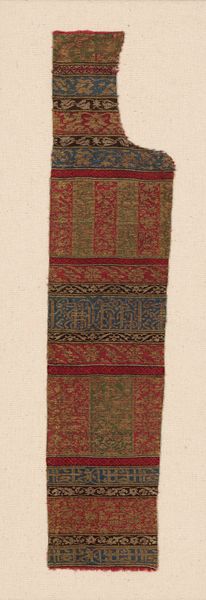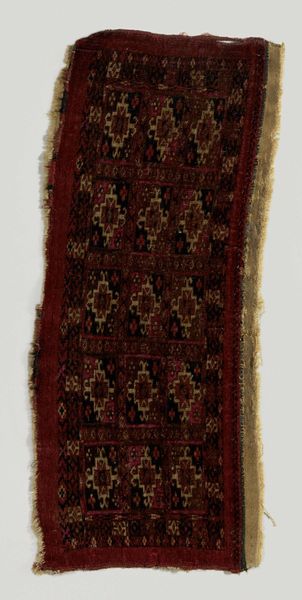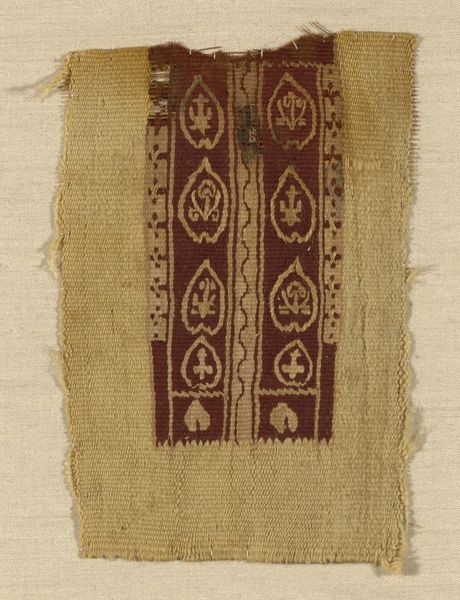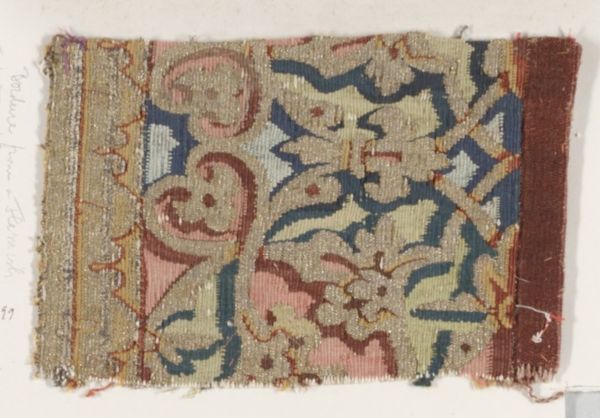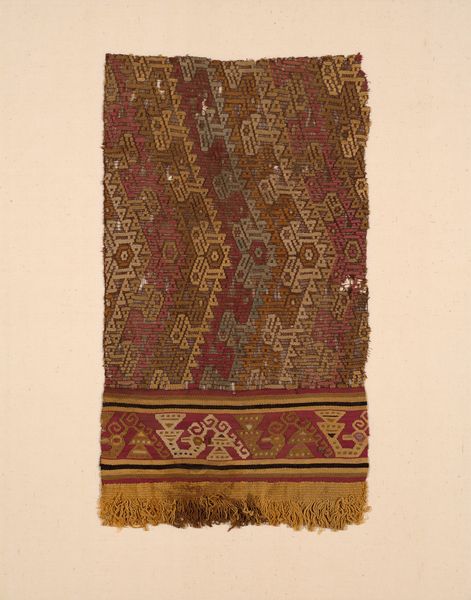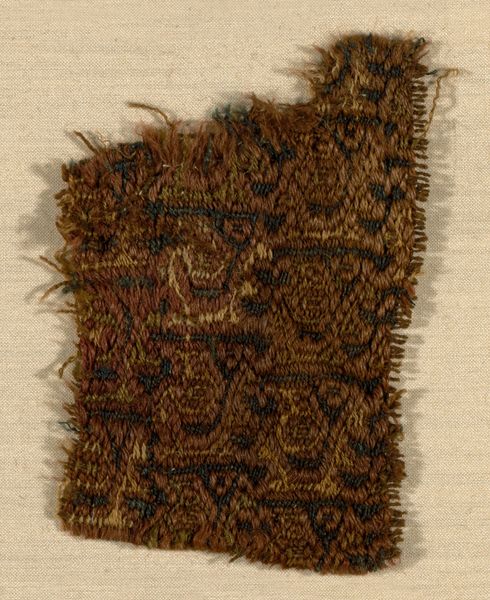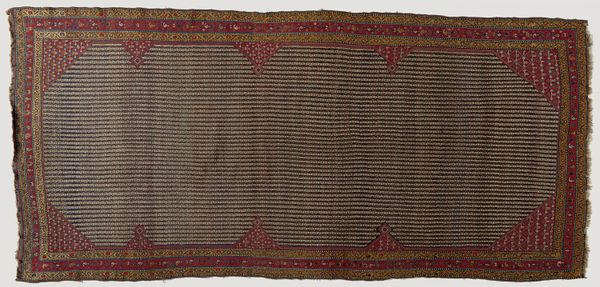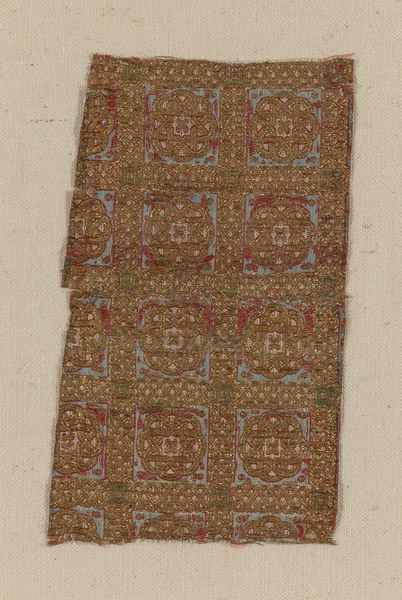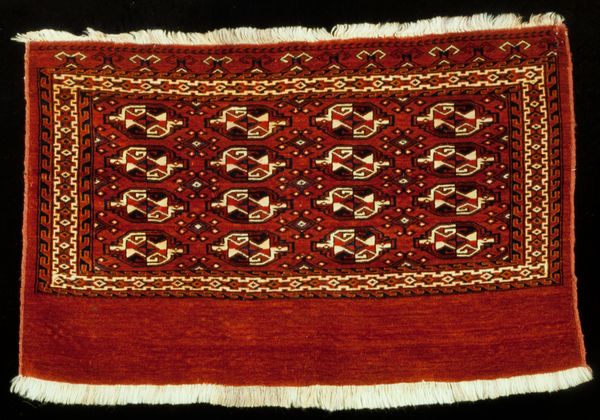
weaving, textile
#
textured
#
weaving
#
textile
#
ancient-egyptian-art
#
text
#
egypt
#
geometric
#
ancient-mediterranean
#
line
#
texture
#
organic texture
Dimensions: 6.4 × 24.8 cm (2 1/2 × 9 3/4 in.)
Copyright: Public Domain
Curator: Editor: Okay, next up is "Border," a Coptic textile from the Roman period, dating to the 3rd-5th century. It’s a fragment, really, a woven strip with a geometric pattern. It strikes me as simultaneously delicate and resilient, given its age and survival. What do you see in this piece, beyond the obvious geometric design? Curator: Well, consider the hands that created this textile, the labor embedded within each woven thread. It’s easy to overlook the immense effort and skill required to produce even a fragment like this. Where did the materials come from? Who controlled the production? Editor: I hadn't thought of it that way. It makes me think of the weaver, maybe part of a workshop or a family enterprise. How does its materiality reflect the social conditions of its production? Curator: Exactly. The choice of fibers, the dyes used – were they locally sourced, or imported? Were the patterns standardized, indicative of mass production for a specific market, or were they unique expressions of individual artistry within established constraints? This speaks volumes about trade routes, economic power, and the transmission of artistic ideas. What about the relationship between form and function, is it purely decorative or did it serve a ritual purpose? Editor: It being a border makes me wonder about its context. Was it part of a larger garment, a curtain, or some other decorative object? What does its existence as a fragment tell us about its journey through time? Curator: Indeed, think about the violence of its fragmentation. What historical circumstances caused this? What was valued, discarded, re-purposed. This damage speaks as loudly as the original craftmanship. Editor: I am starting to think of this object, not just as something beautiful, but as a record of all those processes, both artistic and social, over centuries. It’s powerful. Curator: Precisely. It's about acknowledging the material reality and historical circumstances interwoven within every thread. Editor: Thank you. This new lens has shifted my entire understanding, adding more layers than just aesthetics. Curator: It’s a collaborative discovery; the textile offers rich insights through both of our explorations.
Comments
No comments
Be the first to comment and join the conversation on the ultimate creative platform.

